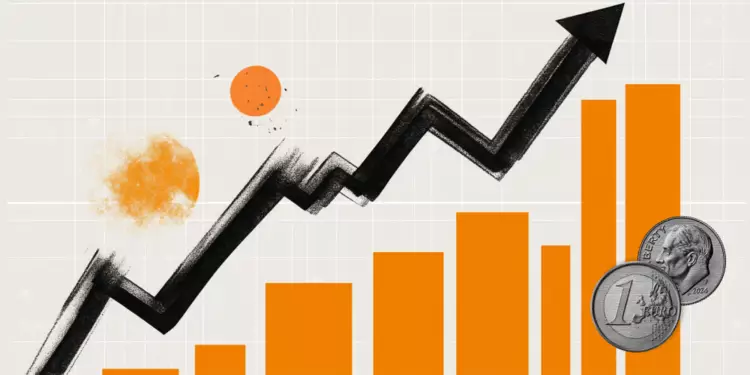The recent oscillations of the EUR/USD exchange rate underscore the fragility of the US Dollar amidst a climate of geopolitical tensions and unpredictable governance. Following an initial surge, EUR/USD experienced a decline, showing signs of volatility typical of the current economic landscape. Those invested in this major currency pair have become increasingly wary as the US Dollar (USD) clawed back some of its earlier losses, driven by waning confidence in its long-term stability. The USD Index (DXY) flirting with the 99.00 mark highlights a lack of decisive strength and raises questions regarding the Dollar’s reliability as a safe-haven asset.
President Trump’s erratic approach to tariff discussions has reignited skepticism about USD integrity, as evidenced by his weekend announcement to pause the imposition of 50% tariffs on the European Union (EU). The decision, purportedly made to facilitate trade negotiations, exemplifies the unpredictable nature of policy that has become synonymous with the current administration. While European Commission President Ursula von der Leyen offered a somewhat comforting update—indicating a willingness to advance discussions—the overall performance of the Dollar remains under scrutiny.
The Resilience of the Euro
In stark contrast to the tumultuous status of the USD, the Euro (EUR) appears to be gaining traction not merely as an alternative currency but also as a viable contender. Revised estimates revealing a robust 0.4% growth in Germany’s economy during the first quarter provide an optimistic backdrop. After two consecutive years of economic contraction casting doubt on the Eurozone’s stability, this uptick signals a potential turnaround, fostering hope for sustained growth in the second half of the year.
As the economic landscape tilts favorably for the Eurozone, it’s imperative to acknowledge that the Euro now benefits from dual advantages. First, it is gaining traction as the most liquid alternative to the Dollar, and second, there appears to be a semblance of economic recovery fueled by strong performance metrics like Germany’s GDP. Analysts have cited that the Euro’s appeal continues to strengthen amid increasing speculations of an impending EU-US trade deal, suggesting that the recent softness of the USD could usher in a prolonged period of Euro strength.
Analyzing the Trade Climate
The current atmosphere of trade negotiations brings to light the complex interplay of regional economies. Trump’s sudden tariff suspension offers hope but also leaves room for confusion and uncertainty. Observers of international finance remain alert, acutely aware that any abrupt shifts in White House policies could dramatically impact currency values—and by extension, global trade dynamics.
Moreover, the credibility crisis surrounding the Dollar has grown, exacerbated by erratic policy decisions and threats to alter leadership at the Federal Reserve. These factors cumulatively contribute to a climate of doubt, rendering the Dollar less reliable for global investors who favor stability.
On the European front, monetary policymakers remain optimistic regarding inflationary pressures, positioning the European Central Bank (ECB) to potentially lower interest rates at its next meeting. Governor Yannis Stournaras’ comments regarding likely rate cuts encapsulate a proactive stance; however, the potential for volatility remains. This juxtaposition of a strengthening Euro against a Dollar in flux paints a contradictory picture of the prevailing economic sentiments.
Upcoming Data Points
Market participants are keenly awaiting forthcoming economic indicators that could dictate short-term movements for the EUR/USD pair. The forthcoming release of the US Personal Consumption Expenditure (PCE) Price Index for April and the Harmonized Index of Consumer Prices (HICP) for major EU nations are pivotal in gauging inflationary trends. These data points could serve as catalysts for market movement, especially if the figures diverge from expectations.
Technically speaking, the EUR/USD pair has recently touched a monthly high near 1.1420, indicating bullish momentum. These trends, supported by key indicators like the 20-day Exponential Moving Average, suggest that the outlook for the Euro remains optimistic, presuming it can maintain above critical support levels. Notably, an increase in the Relative Strength Index (RSI) would reinforce bullish sentiments, potentially entrenching the Euro’s position against a beleaguered Dollar.
As we navigate the complex world of currency exchange framed by uncertainty, it is crucial to remain alert to emerging trends that can reshape the USD-EUR dynamic. The interplay of political maneuvering, economic indicators, and global market sentiment continues to play a pivotal role in determining the trajectories of these major currencies.

